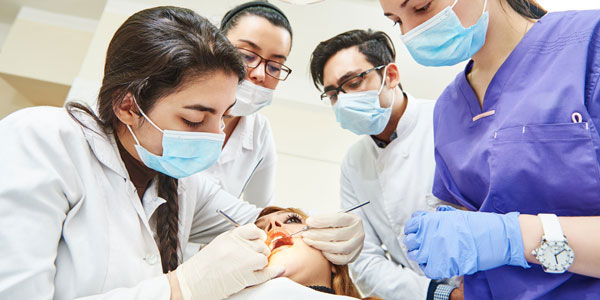 Dental Students typically spend eight years total in college preparing for clinical practice. It’s in the last years where they learn about sleep apnea and craniofacial pain treatment. Or do they? With few to no hours dedicated to these services, postgraduate education remains vital in procuring a successful sleep apnea and craniofacial pain practice.
Dental Students typically spend eight years total in college preparing for clinical practice. It’s in the last years where they learn about sleep apnea and craniofacial pain treatment. Or do they? With few to no hours dedicated to these services, postgraduate education remains vital in procuring a successful sleep apnea and craniofacial pain practice.
Inadequate Education
Students are missing out on the education necessary for advanced services in sleep apnea and craniofacial pain. A national survey conducted by Rutgers medical schools, indicated on average, less than two hours of total teaching time is allocated to sleep and sleep disorders while 37 schools reported no structured teaching time in this area. In fact, only 8% of medical students trained in the use of sleep laboratory procedures and 11% have participated in the clinical evaluation of sleep-disordered patients.1
Dentists are receiving even less education in school in these areas. Dental students, on average, are only spending 2.65 hours on sleep apnea. In fact, a survey sent to general dentists reported 58% could not identify common signs and symptoms of obstructive sleep apnea while 55% did not know the mechanism for mandibular advance devices.
Additionally, only 16% said they were taught about this issue in dental school and 40% knew little or nothing about sleep apnea treatment for patients. However, 30% did indicate they learned from postgraduate training.2 This data shows schools are missing the necessary resources to support sleep apnea and craniofacial pain courses, but the availability of postgraduate education can solve the lack of information for providing proper treatment.
Postgraduate Education
Unqualified faculty, a lack of curriculum and the need for additional clinical educational resources creates a need for postgraduate education for dentists. In a position paper published in Sleep it is mentioned that oral appliances should be fitted by qualified dental personnel who are trained and experienced in the overall care of oral health, the temporomandibular joint, dental occlusion and associated oral structures.3 Meaning, postgraduate education is key for treatment success.
From introduction courses in the field of dental sleep medicine and craniofacial pain to advanced courses and mini-residencies for those who have completed several seminars and are ready for in-depth programs, there are many options available for continuing education. See Table 1.
If you want to become proficient in dental sleep medicine and/or craniofacial pain it is vital that you take quality educational courses. While some courses might claim to provide all of the education necessary to provide services in the intended fields within a day or even only a couple of hours, these courses might simply be out there to make money – it is imperative to do some research first.
In order to become accomplished in dental sleep medicine and craniofacial pain, it is important to take the necessary post educational courses for the allotted number of credits before being able to provide the appropriate services for patients. Any patient has the potential to become complex, training will help you provide this critical service with confidence.
Using the summary list in Table 1 and others, you can find the right educational path for you. Ask questions and be sure you are investing your time and money wisely. Treating sleep patients is challenging – but fun and rewarding! Confident, successful therapy begins with excellent preparation.

Stay Relevant With Dental Sleep Practice
Join our email list for CE courses and webinars, articles and more..




